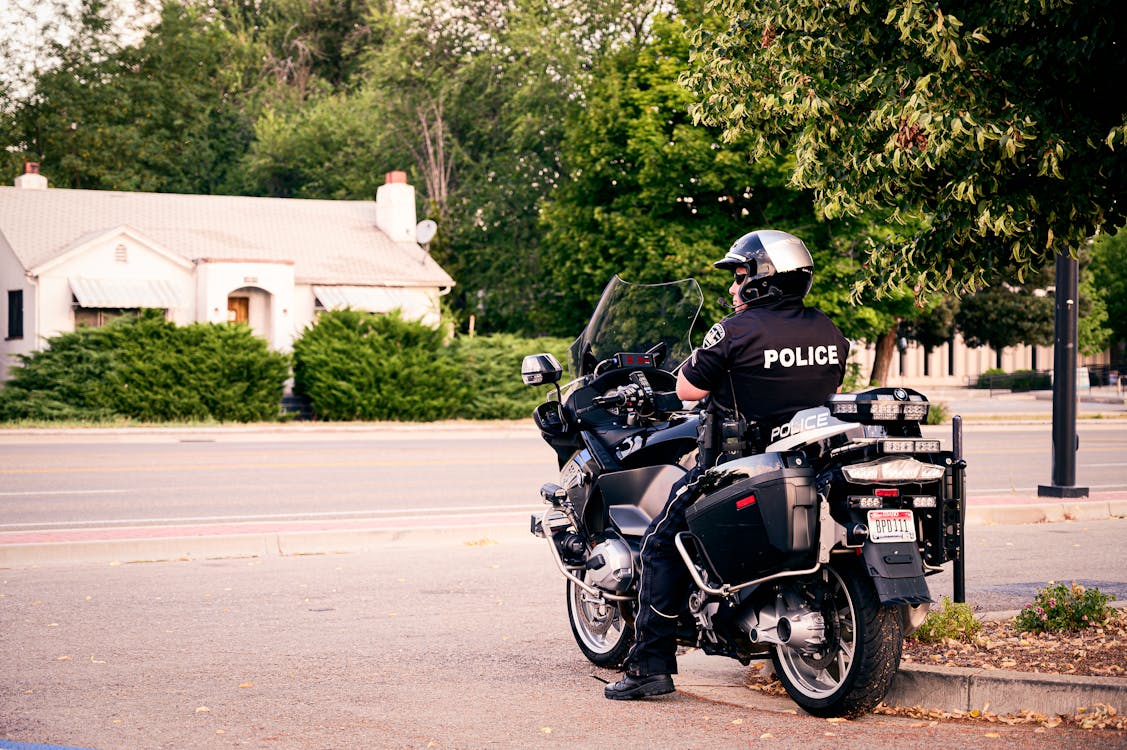In Terry v. Ohio,[1] which was decided by the United States Supreme Court in 1968, the Stop and Frisk was legalized and became a part of the lexicon of American law enforcement. The need to protect the nation’s police officers, as well as the public was finally recognized.
Detective Martin McFadden, a thirty-nine year veteran of the Cleveland, Ohio, Police Department, assigned to the downtown beat for thirty years, saw three men walking back and forth in front of the same store numerous times. He testified that he suspected they were casing a stick-up. The officer testified that he only patted the men down to see whether they had weapons; he did not put his hands beneath their outer garments until he felt guns on two of them.
Recognizing the need to protect the officer, the court stated:
Certainly it would be unreasonable to require that police officers take unnecessary risks in the performance of their duties. American criminals have a long tradition of armed violence, and every year in this country many law enforcement officers are killed in the line of duty, and thousands more are wounded.
Striking a balance between those risks to our police officers, with the rights of our citizens, they went on to hold:
Our evaluation of the proper balance that has to be struck in this type of case leads us to conclude that there must be a narrowly drawn authority to permit a reasonable search for weapons for the protection of the police officer, where he has reason to believe that he is dealing with an armed and dangerous individual, regardless of whether he has probable cause to arrest the individual for a crime. The officer need not be absolutely certain that the individual is armed; the issue is whether a reasonably prudent man in the circumstances would be warranted in the belief that his safety or that of others was in danger.
Now that we know when we can pat down a person, how about his car — or his house — or someone near him? Let’s follow the cases and see where they take us.
In Michigan v. Long,[2] the court applied the principles of Terry in the context of a vehicular roadside encounter stating:
The search of the passenger compartment of an automobile, limited to those areas in which a weapon may be placed or hidden, is permissible if the police officer possesses a reasonable belief based on specific and articulable facts which, taken together with the rational inferences to be drawn from those facts, reasonably warrant the officer in believing that the suspect is dangerous and the suspect may gain immediate control of weapons.
The court in Long took that language right out of Terry v. Ohio.
Let’s see what those facts were:
Deputy Sheriffs Howell and Lewis were on patrol in rural Barry County, Michigan, when they observed a speeding and erratically driven car go into a ditch shortly after midnight. When the deputies approached the scene of the accident, they met David Long at the rear of the car. The driver’s door was open. He was the only person present. Long had difficulty responding to repeated requests to produce his driver’s license and registration and appeared to be ‘under the influence of something.’ As Long started walking towards the open car door, the deputies followed and observed a large hunting knife on the floorboard of the driver’s side of the car. They shined their flashlights into the car and saw ‘something’ protruding from under the armrest. Their intention was ‘to search for other weapons.’ At this point, Deputy Howell entered the vehicle to examine the armrest, and saw a pouch of marijuana on the front seat. After Long was convicted, he asked the U.S. Supreme Court to determine ‘the authority of a police officer to protect himself by conducting a Terry-type search of the passenger compartment of a motor vehicle during the lawful investigatory stop of the occupant of the vehicle.’
The court held:
Our past cases indicate … that protection of police and others can justify protective searches when police have a reasonable belief that the suspect poses a danger, that roadside encounters between police and suspects are especially hazardous, and that danger may arise from the possible presence of weapons in the area surrounding a suspect. These principles compel our conclusion that the search of the passenger compartment of an automobile, limited to those areas in which a weapon may be placed or hidden, is permissible if the police officer possesses a reasonable belief based on “specific and articulable facts which, taken together with the rational inferences from those facts, reasonably warrant” the officers in believing that the suspect is dangerous and the suspect may gain immediate control of weapons. Citing to Terry.
Let’s change the facts a bit. Let’s say Long was already in handcuffs, having been placed under arrest. Could you still pat down the car? Is there still a danger? That’s just what happened in Texas to Richard Wallen. Wallen was stopped for speeding. As the police officer was requesting his license and registration, he noticed several weapons in the vehicle. Wallen kept walking around the car and looking into it. Eventually a records check revealed an outstanding traffic warrant and Wallen was handcuffed and placed in the rear of the patrol car. Was there any need for a protective search of the car? Could Wallen get to those guns and hurt the officer? The United States Court of Appeals for the Fifth Circuit (Texas, Louisiana and Mississippi) ruled that ‘suspects in handcuffs can remain a danger to the police, particularly when weapons are present…. The rule of Long and Terry applies here to legitimize this sweep, although Wallen was in handcuffs at the time.’[3]
A few years after Deputy Howell frisked David Long’s car for weapons, detectives in Prince George’s County, Maryland, obtained arrest warrants for two men suspected of a recent armed robbery of a Godfather’s Pizza restaurant in their jurisdiction. One of the robbers had been wearing a red running suit. The first to be arrested, two days later, was Jerome Edward Buie. A team of six or seven officers went to his home after calling first to make sure he was there. After gaining entry, the officers fanned out through the first and second floor looking for him. A Corporal Rozar shouted into the basement, ordering anyone there to come out. When a male voice answered, Rozar announced: This is the police, show me your hands. Finally Buie, and those hands, came up. He was arrested, searched and handcuffed by Cpl. Rozar. So why did he have to pat down the house?
The second robber had not yet been apprehended. Who else was in the house that might attack the officers as they were taking Buie away? A Det. Frolich entered the basement (after Buie came up) to see if anyone else was down there. He noticed a red running suit lying in plain view and seized it. It was moved into evidence at Buie’s trial and he was convicted.
The Supreme Court, building upon Long and Terry, held:
We conclude that the Fourth Amendment would permit the protective sweep undertaken here if the searching officer possessed a reasonable belief based on specific and articulable facts which, taken together with the rational inferences to be drawn from those facts, reasonably warranted the officer in believing that the area swept harbored an individual posing a danger to the officer or others.[4]
They further explained:
A ‘protective sweep’ is a quick and limited search of a premises, incident to an arrest and conducted to protect the safety of police officers or others. It is narrowly confined to a cursory visual inspection of those places in which a person might be hiding.
Since the running suit was in plain view where the officer had a legal right to be, its seizure was lawful.
Let’s extend this a bit. Suppose Buie was not in his home, but arrested in the neighborhood tavern. Who else could you pat down there? An earlier case, Ybarra v. Illinois,[5] gives us the answer.
In March of 1976, a special agent of the Illinois Bureau of Investigation applied for and received a search warrant for the Aurora Tap Tavern, in Aurora, Illinois. The warrant was to search the tavern and the bartender, one “Greg, a white male with blond hair, about 25 years of age,” for tin foil packets of heroin that “Greg” was alleged to be selling in the tavern.
On the date the warrant was issued, seven or eight officers entered the tavern and announced that all present would have to submit to a ‘cursory search for weapons.’ One officer patted down 9 to 13 customers while the remaining officers conducted the search of the premises. Ventura Ybarra was found to have a ‘cigarette pack with … six tin foil packets of heroin in it.’
Upon entering the tavern, the police did not recognize Ybarra and had no reason to believe he was committing a crime. He made no gestures indicative of criminal conduct, and made no movements that might suggest an attempt to conceal contraband, and said nothing suspicious to the officers. His hands were empty and the police had no reason to believe he might assault them. All the police knew about Ybarra was that he was in a public tavern at a time when the police believed the bartender was selling heroin. (Compare his actions to those of Terry and his associates.)
The court held that, even though the police had a search warrant to search the tavern and Ybarra was in the tavern at that time, neither a person’s mere presence in that tavern, nor his closeness to the person to be searched (Greg) gives rise to probable cause to search that person. There was no probable cause particularized to Ybarra. The court explained:
Each patron who walked into the Aurora Tavern … was clothed with the constitutional protection against unreasonable search or … seizure…. Although the search warrant … gave the officers authority to search the premises and to search “Greg,” it gave them no authority whatever to invade the constitutional protections possessed individually by the tavern’s customers.[6]
What have we learned from the line of cases beginning with Terry and continued by Long, Buie and Ybarra?
As dangerous as the police officer’s job is, the courts have allowed him/her to adequately protect themselves, if there are specific and articulable facts which would warrant a reasonable person in believing that the suspect is armed or dangerous.











